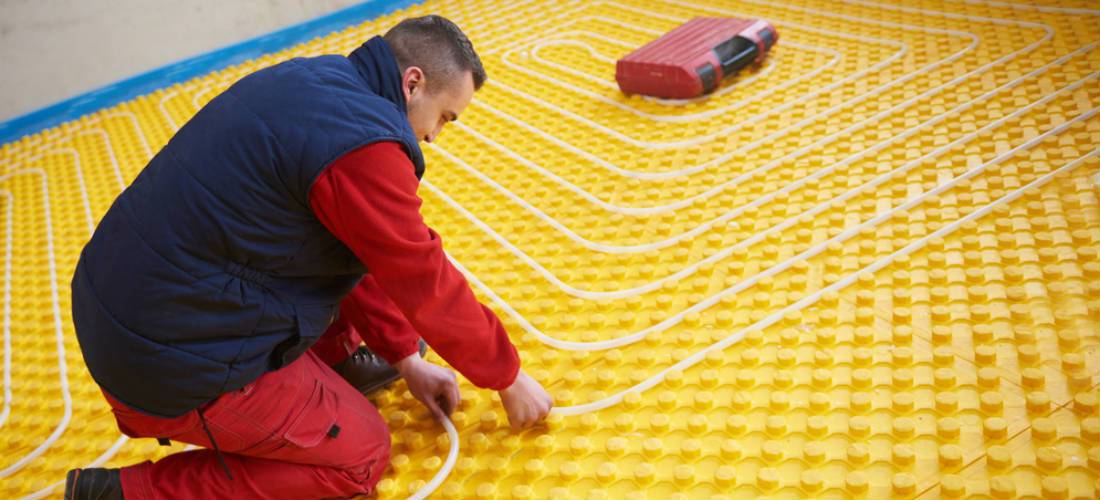Pros
Radiant floors have numerous benefits that go beyond just warming the feet or keeping a room warm. Their effects are evident especially when you walk inside a room from a cold place or when they dry the bathroom for you. The list is long but I will mention a few.
With radiant floors, everything is kept warm. It is your room, feet and body that are kept at optimal temperatures. You can lower the heat from the thermostat and still keep the rooms warm. Heat from the floor rises up like a current, warming the whole building. It is circulated from the floor to the ceiling by heating the air together with the dust particles in it. The heat is not lost. Consequently, you are kept warm at low temperatures.

Radiant floors can be incorporated to any floor type. They can be installed under concrete floors, tiles, laminated or wooden floors. The only exception is carpeted floors which is a kind of insulator; materials that do not conduct heat.
They are durable. They can last you a lifetime. I say so because when you compare the technology to a furnace, the difference seems to be a lifetime. Most of them last for over 35 years. Your work would be to maintain them at good conditions .
Heated floor systems do not rely on blowers. They do not have the extra noise that comes with such devices. They lack of ducts that rattle or loose squeaking vents that come with a furnace. A central air heating system attracts dirt, dust and pollen that can trigger allergic reactions. Such problems are eliminated with heated floors.
Cons
As much as they have their advantages, there are a couple of setbacks to the system. These are:
Installation. With an already set floor, you have to remove the surface for installation. The electric radiant pads are a mechanism that was meant to reduce such inconvenience. However, you still have to dig to the basement as installation can only be done from underneath. The affordable way of installing the system is when the floor has not been constructed.
They work differently with different types of floors. They are more effective with some than others. Good conductors of heat, these include concrete, stone and ceramic tiles transmit and preserve heat effectively yet they still withstand high temperatures. With wooden floors, temperatures cause their uneven expansion which leads to tiny gaps on the floor. Plastic laminate and Vinyl floors also come with temperature limitations. On the other hand, carpets are insulating material that decreases the flow of heat. You have to consider all these factors during installation or else, the system will be ineffective.

Contractors are unfamiliar with the installation of radiant floors. The technology is not widespread. Homeowners have to do extensive research on good installers, which can be exhausting and frustrating.
Installation requires the ripping off of the floor. These can be ‘traumatizing’ to homeowners who have just completed building their new homes. For old buildings, work on electric cables is extensive, which increases the expenses. Even more, when the installation needs repair, you might have to de-construct the floor again.
Electricity is relatively expensive. Consequently, very few homes can afford to heat the complete floor with the electric system. Simply put, it is more expensive to install the system than replacing a furnace. Hydraulic systems are not a substitute because they cost more that electric systems. Repairing radiant eaters is expensive, but they are also difficult to detect a fault because they system is buried in the floor.
In-floor radiant heat system is slow in warming houses. This is more so for water systems, which require couple of hours to circulate sufficient hot to rise the temperatures of a room. Top of FormBottom of Form
Hydraulic systems are not only expensive to install but they also require an extensive timeline. The contractors sandwich the floor with and a heating tube underneath to enhance its performers. This construction requires time and money which are both costly.
In conclusion, radiant floors are good system. However, it will be best to prepare yourself for other unexpected drawbacks.













Write a Comment